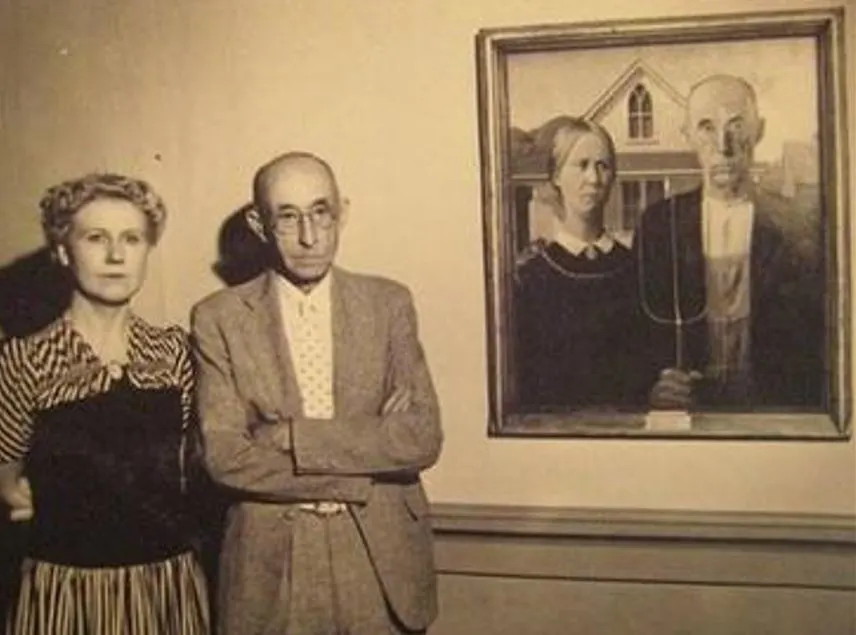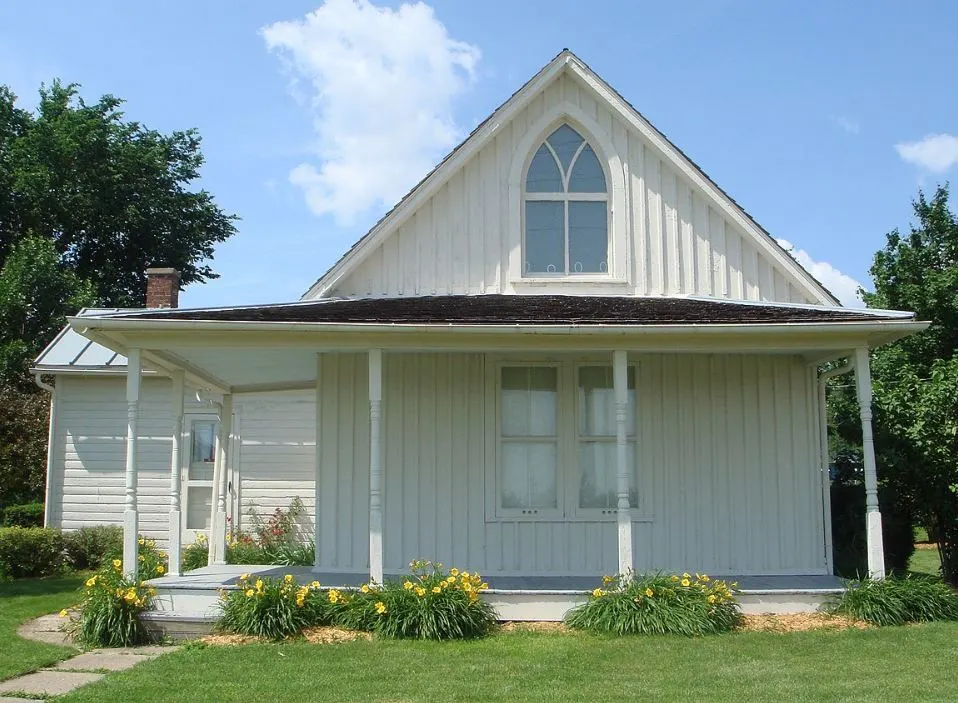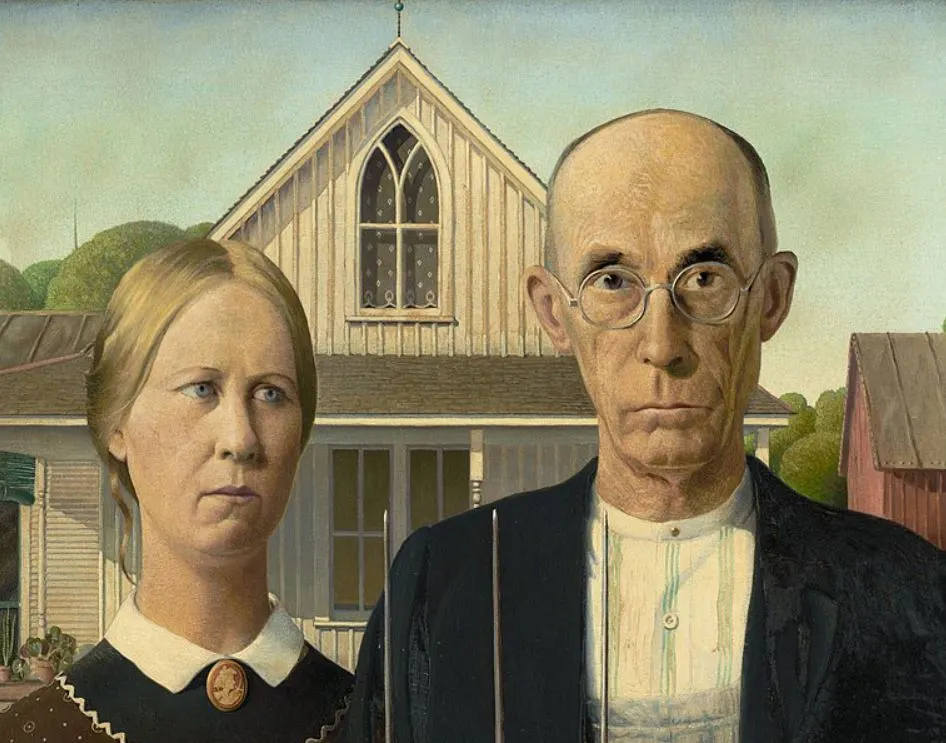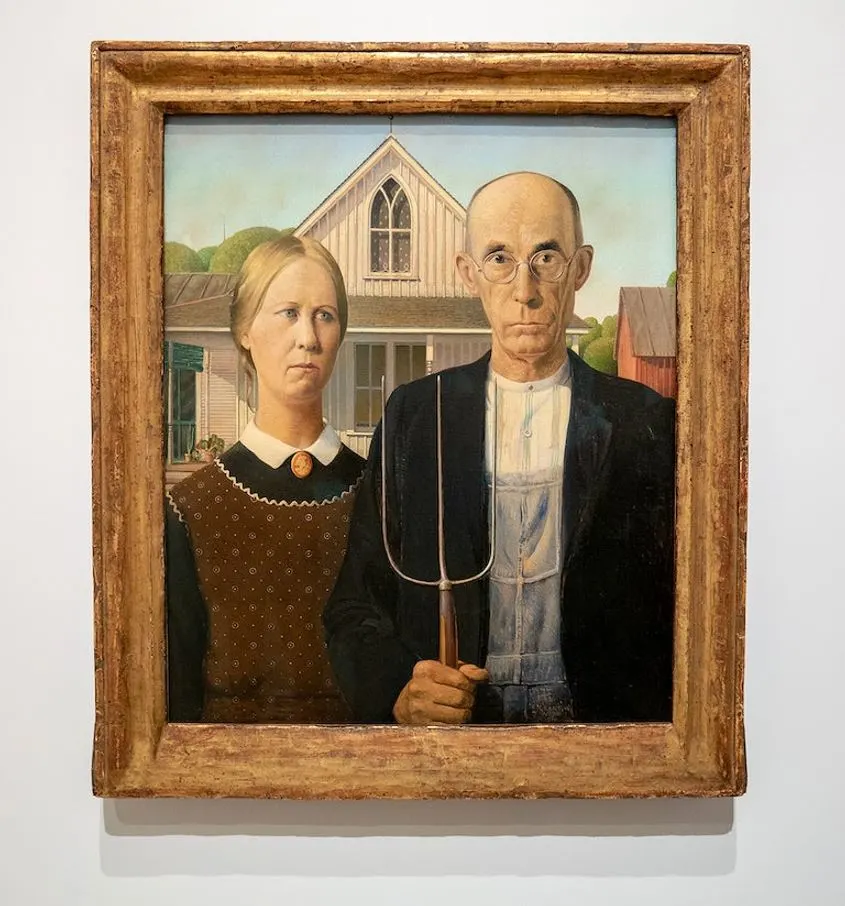Few paintings capture the essence of American culture like Grant Wood’s “American Gothic.”
The iconic portrait, depicting a stern-faced farmer and his spinster daughter standing in front of their Iowa farmhouse, has become an enduring symbol of the American heartland.
Despite its fame, however, few people know the fascinating story behind the painting’s creation and legacy.
In this article, I’ll explore the history of Grant Wood’s masterpiece and uncover the secrets behind its lasting appeal. From its inspiration to its meaning, we’ll examine every aspect of this iconic work of art.
1. This is what inspired the painting
Grant Wood created “American Gothic” in 1930, during the height of the Great Depression. The painting’s inspiration came from a small white farmhouse in Eldon, Iowa, where Wood had visited his dentist.
The house, which was built in the Carpenter Gothic style, caught Wood’s eye, and he immediately knew that he wanted to feature it in one of his paintings.
As Wood sketched the house, he imagined the people who might live there. He envisioned a grumpy farmer and his unmarried daughter, both of whom embodied the hard-working, no-nonsense values of the American Midwest.
With this vision in mind, Wood set out to create his masterpiece.

2. It depicts the artist’s sister and his dentist
Grant Wood used his sister Nan and his dentist Dr. Byron McKeeby as models for the painting. He dressed them in simple, everyday clothing to emphasize the common, hardworking nature of the people he was portraying.

Wood placed the farmer and his daughter in front of the house, which he painted with painstaking detail. The result was a striking portrait that captured the essence of rural American life.
Interestingly, Wood painted “American Gothic” in a style that he referred to as “Northern Renaissance,” which he had studied during a trip to Europe.
This style, which emphasized detail and precision, gave the painting a sense of gravity and seriousness that mirrored the values of the people it depicted.

3. There’s a lot more to the painting than meets the eye
At first glance, this painting may seem like a simple portrait of two Midwesterners standing in front of their home.
However, the painting’s meaning goes much deeper than that. Wood intended “American Gothic” to be a commentary on the state of American society during the Great Depression.
The painting’s stern-faced farmer represents the stoic resilience of the American people during hard times.
His pitchfork symbolizes the hard work and determination required to survive in an uncertain world. The female, meanwhile, represents the steadfastness and devotion of women in a male-dominated society.
Together, the farmer and his daughter embody the values that Wood believed were necessary for America to endure and prosper during the Great Depression.

4. Not everybody liked the painting initially
When Grant Wood submitted “American Gothic” to the Art Institute of Chicago’s annual exhibition in 1930, it was met with mixed reviews.
Some critics praised the painting’s stark simplicity, while others derided it as a caricature of Midwestern life.
Despite the mixed reception, the painting won a bronze medal and a $300 prize. Its success helped to launch Wood’s career as an artist and cemented his place in American art history.
5. It remains one of the most iconic American paintings today
Today, “American Gothic” is one of the most recognizable paintings in American art. It has been parodied, referenced, and reproduced countless
It has appeared in everything from advertisements to television shows. It has even inspired a famous Grant Wood sculpture titled “Daughters of Revolution.”

6. The true meaning of the painting is still debated today
Despite the painting’s enduring popularity, there has been much debate over its meaning. Some critics argue that “American Gothic” is a celebration of Midwestern values and a tribute to the hardworking people who built America.
Others see the painting as a commentary on the oppressive nature of American society, particularly in its treatment of women.
One of the most interesting debates centers on the identity of the woman in the painting. While many people assume that she is the farmer’s daughter, others believe that she may be his wife, his sister, or even his hired help.
This ambiguity adds an extra layer of mystery to the painting, inviting viewers to draw their conclusions about the identity of the woman and her relationship with the farmer.

7. How big is American Gothic by Grant Wood?
Despite the fact that this is one of the most famous American paintings ever produced, it’s far from being the largest work.
American Gothic (1930) by Grant Wood is an oil on canvas painting that has dimensions of 78 × 65.3 centimeters (30.75 × 25.75 inches).

8. Where is Grant Wood’s masterpiece located today?
Wood’s painting is currently housed at the Art Institute of Chicago, one of the largest and oldest art museums in the United States.
It was acquired by the museum in 1930, just a few months after it was completed and around the time it was exhibited at “American Painting Today.”
The museum’s board of trustees was impressed and decided to acquire it for the museum’s permanent collection. Today, “American Gothic” is one of the Art Institute of Chicago’s most popular and well-known works of art.

